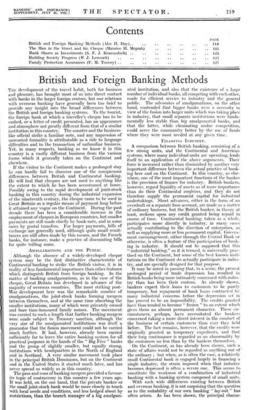AMALGAMATIONS AND THE PUBLIC.
Although the absence of a widely-developed cheque system may be the first distinctive characteristic of Continental banking to strike the British visitor, it is in reality of less fundamental importance than other features which. distinguish- British from foreign banking. In the matter of banking amalgamations,- as in the case of the, cheque, Great Britain has developed in advance of the Majority of overseas countries. The most striking post- War development here was the remarkable number of. amalgamations, the joint-stock banks forming mergers between themselves, and at the same time absorbing the smaller institutions, Many of which were privately owned and bore time-honoured family names. •The movement was carried to such a length that further banking mergers were made subject to Treasury sanction, although the• very size of the amalgamated institutions was itself a• guarantee that the fusion movement could not be carried much further. It had, however, already been carried sufficiently far to leave the entire banking system for all practical purposes in the hands of the " Big Five " banks and the group of slightly smaller, but equally strong, institutions with headquarters in the North of England and in Scotland. A very similar movement took place in the principal British Dominions, but on the Continent and in the United States it started much later, and has never spread so widely as in this country. The pros and cons of banking mergers provided a favour- ite topic of controversy in this country a few years ago. It was held, on the one hand, that the private banker or the small joint-stock bank would be more closely in touch with local needs and conditions, and less hedged about by restrictions, than the branch manager of a big amalgam- ated institution, and also that the existence of a large number of individual banks, all competing with each other, made for efficient service to industry and the general public. The advocates of amalgamations, on the other hand, contended that bigger banks were a necessity in view of the fusion into larger units which was taking place in industry, that small separate institutions were funda- mentally less stable than big amalgamated banks, and that the latter, while eliminating undue competition, could serve the community better by the use of funds where they were most needed at any given time.










































 Previous page
Previous page